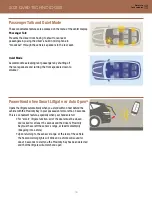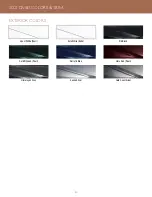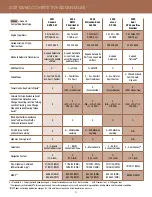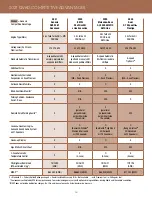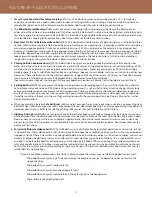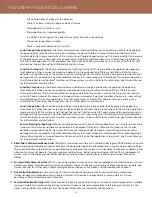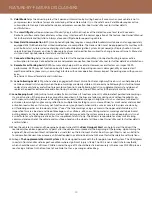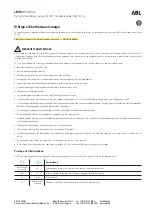
GENESIS RESouRcE LISt
14.
Valet Mode helps the driver to protect their personal information by limiting head unit access when your vehicle is not in
your possession and allows for remote monitoring of the vehicle while it is in the valet’s care. Valet Mode requires active
subscription to Genesis Connected Services and wireless connection. See Owner’s Manual for further details
and limitations.
15. The
smart liftgate will open when your Proximity Key is within 40 inches of the detection area for at least 3 seconds.
Radio transmitters and other vehicle smart keys may interfere with the normal operation of this feature. See Owner’s Manual
for further details and limitations. Always close your liftgate before operating vehicle.
16.
Near Field Communication (NFC) smartphone Digital Key requires a compatible Android smartphone and an appropriately
equipped 2021 G80 vehicle. Not all Android devices are compatible. The Genesis G80 must be equipped with smart key with
push button start, wireless device charging, and Audio Video Navigation System 5.0 (or newer) or Display Audio 2.0. Lock/
unlock functionality works on driver’s door only. Features and specifications subject to change. See your Owner’s Manual or
visit your local Hyundai dealer for details and limitations.
17.
Connected Routing helps the driver access the latest traffic and road conditions. Connected Routing requires active
subscription to Genesis Connected Services and wireless connection. See Owner’s Manual for further details and limitations.
18.
Remote Smart Parking Assist (RSPA) can remotely help park the vehicle. However, several factors can impact RSPA
performance. RSPA may not function correctly if one or more of the parking sensors is damaged, dirty or covered or if
weather conditions (heavy rain, snow or fog) interfere with sensor operation. Always inspect the parking area with your own
eyes.
See Owner’s Manual for details and limitations.
19.
Lane Following Assist (LFA), when actively engaged with Smart Cruise Control or Highway Drive Assist, can help keep the
vehicle centered in its lane only when the lane markings are clearly visible on the road. Lane Following Assist will not work
under all circumstances and will not prevent loss of control. Lane Following Assist is a supplemental assist and does not
replace the need for extreme care and attention by the driver. See Owner’s Manual for further details and limitations.
20.
Lane Keeping Assist (LKA) will not work under all circumstances. It functions when it is able to detect painted lane markings.
It cannot function if the lane markings cannot be seen clearly, if the lines are faded, or during dusk without headlights on,
with snow, rain, sleet, dust, leaves or standing water on road, sudden changes in brightness such as shadows, tunnel exits/
entrances, low sunlight angle causing reflections, multiple lane markings or criss-crossed lines, tar crack sealer and cracked
or broken road surfaces. It also may not function on very rough roads, when walls, curbs or concrete barriers are close by,
or if following another car too closely. Since it “sees” the lane markings using a camera in the upper windshield area, it is
imperative this area be clear and free of blockage such as stickers, dirt, snow, tinting material, markings and labels. Avoid
putting objects on the dashboard that may reflect light or images onto the system camera area. Lane Keeping Assist is not
a substitute for safe driving practices, but is a supplemental assist only. The driver is responsible for always maintaining
command and control of the vehicle and must keep hands on the wheel at all times. See Owner’s Manual for further details
and limitations.
21. When the vehicle is parked and the engine has been turned off, the
Rear Occupant Alert can help to alert the driver if the
rear door(s) have been opened at any point after the vehicle was unlocked at the beginning of the journey. Upon turning the
engine off, Rear Occupant Alert will provide a visual alert on the instrument cluster. Rear Occupant Alert is not a substitute
for driver attentiveness. Never leave a child unattended in a vehicle. See Owner’s Manual for further details and limitations.
22. Airbags:
The Supplemental Restraint System (SRS) is designed to work with the three-point seatbelt system. The SRS deploys
in certain frontal and/or side-impact conditions where significant injury is likely. The SRS is not a substitute for seatbelts,
which should be worn at all times. Children under the age of 13 should be restrained securely in the rear seat. NEVER place a
rear-facing child seat in the front seat of a vehicle that has a passenger-side airbag.
FEATURE-by-FEATURE DISCLAImERS
29





